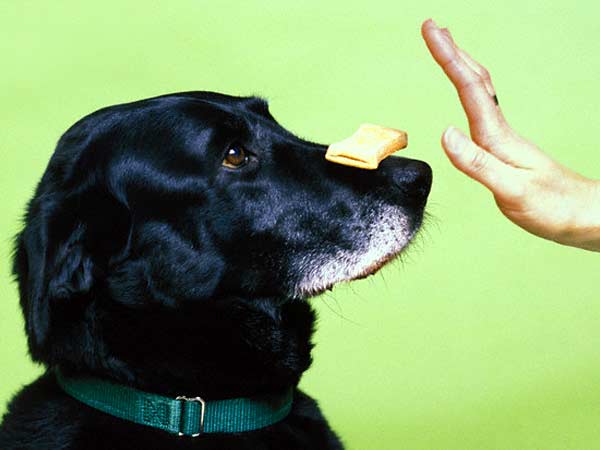High Fives and Participation Ribbons
I end every session with a high five, whether the client demolished their workout or just went through the motions.
Each person has a different goal set for being in the gym, and their specific motivation to achieve those goals is entirely different as well. Take my client who just returned from the Paralympic games where he managed to get a couple of medals. His motivation during the workouts was to get better for his sport, and it translated into a tangible directive relating to how hard he pushed during those workouts. Another client of mine only trains when he has a session with me every 2 weeks. Otherwise he’s fairly sedentary, and the sessions are more of a time to catch up, him to tell me stories about his life, and to generally move around a bit under some guidance without getting too sore.
They each get high fives at the end of the workout.

Some clients expect the high five and when they think the workout is over they get their hand ready, hope streaming through their eyes, mouth hanging slightly agape in anticipatory breathlessness, and then seem entirely crushed when I point at the sled for them to do one more set.
Occasionally a client may have a lackluster workout, and feel like they’re not worthy of a high five (seriously?), so when I go to accost their palm with mine, they timidly try to get just a minimal tap, sheepishly hanging their head while shrugging their shoulder. In their eyes, the vigorousness of their high five is directly correlated to their abilities during the workout.
Other times I’ll tease a shorter client by extending my arm in the air as high as it will go, and they either jump to hit it or kick me in the shins for being a jerk.
This high five is essentially the grown ups gym equivalent of a participation ribbon.

They get a high five for showing up, working with what they have that day, and walking away knowing they did something more productive than not being there in the first place. Essentially, it’s a mild extrinsic reward for a desired behaviour.
The use of participation ribbons and non-important rewards for simply showing up and doing something has been a controversial topic. Is it a reward for mediocrity? There’s some research that shows differences in intrinsic and extrinsic motivational elements depending on whether the person is rewarded for a task that they otherwise would find enjoyable as well as those who are rewarded to do a task they otherwise wouldn’t.
For instance, let’s say a young kid loves playing soccer, and they start getting rewarded with new uniforms, pizza parties, participation ribbons, and start to attach some form of value to the rewards and the activity they love doing. This can create a situation called the overjustification effect, which can lead to the kid not enjoying the activity as much due in part to the decreased joy of the activity from heightened expectations. A landmark paper by Leppert et al back in 1973 showed that 3-5 year olds playing an activity that they found enjoyable and who were told they would receive a reward for doing the activity had less motivation on a subsequent trial than kids who received no reward, or who were surprised with an reward.
We can see this in the fitness industry all the time. Someone loves to work out, so they get a job as a group exercise instructor or get certified as a personal trainer, so now working out becomes their job, and their own love of it begins to diminish. Professional athletes struggle with this a lot as well.
The use of rewards can come in many forms, including verbal praise. Telling someone they worked hard and are doing awesome all the time without giving specific feedback of areas they could improve can lead the person to not try as hard or focus on their activity as much. If little Johnny only hears how awesome and amazing he is all the time, he starts to believe it, and thinks everyone should bow down to his greatness. This rarely goes over well in entry level jobs.
In some instances, it could be said that the rewards of ribbons or verbal praise could become the motivating factors for participation, which would then make these extrinsic factors versus intrinsic. The individual is no longer doing an activity for the joy of it, but for the perceived reward they expect at the end of the day.
A lot of this would hinge on the value the person attaches to the motivator. Why do we give a trophy to the winner, and why do athletes almost kill themselves in the pursuit of such a thing, especially when I could literally purchase my own trophy for as little as $5? If the pursuit of the trophy is the encompassment of effort, what values are attached the the achievement of that trophy, whereas the exact same trophy acquired in a different manner is deemed undesirable? If I worked for $100 or found $100 on the ground, I’d still have $100. I wouldn’t necessarily value the floor money more than the job money, because they each do the same thing. It comes down to the values attached to winning the trophy in competition versus purchasing it. The value is in the achievement. I can tell a way cooler story about floor duckets than I can about clocking hours at work.
I don’t think you would ever find someone who would say they value a participation ribbon as high as something like the Stanley Cup, an Olympic medal, or Ballon D’Or award. Likewise, people won’t work themselves out of their goalset or personal motivation to hinge their lives and personal values on the achievement or rejection of a high five.
So why do we give participation ribbons to the kids who don’t win, or give a high five regardless of effort in a gym? Part of it comes down to concepts of fairness and goal motivation related to whether a situation is considered fair by all participants. If we reward everyone relatively equally, everyone’s happy and continues to contribute.
If we reward unequally, then all hell breaks loose.
The goal activity still produced a reward, but it wasn’t considered as fair. What do we teach young kids all the time? Sharing, fairness, and rewarding co-play. If the monkey on the left had received half a grape, he would likely be happier than just getting the cucumber.
This comes down to how closely matched the value of a reward in the achievers eyes matches the expectancy of their ability to achieve that reward, a concept cleverly called the Expectancy-Value theory. Essentially, if a kid thinks they’re good at sports but terrible at math, they’ll devote more time to sports and activities they feel they’re good at, and less to math. They might also devote more energy and time to skillset developments they want to improve because of their own perceived importance in that skillset, even if they’re not great at it, but because they want to become great at it. The concept of self-identified values and personal aptitudes was shown to happen as early as first grade, so it’s likely a fairly early trait to develop, and remains relatively consistent all the way through grade 12 students and beyond.
So are extrinsic motivators a bad idea? Not at all. Some people engage in activities entirely for the outcome benefits. Have you ever gone through a workout you absolutely hated, or dieted with a plan that absolutely sucked your willingness to live, because you knew you would benefit from it down the road? It’s essentially the entire concept of retirement savings versus balling out in the club with bottle service and limos.
Extrinsic motivators can be a form of operant conditioning, or a reward system to help promote the development of beneficial behaviours. If you’ve ever tried to train a dog, you know it’s not very easy without a ready supply of treats.

One of the main reasons for athletic competition is to win the trophy, which we’ve already discussed is a fairly meaningless pursuit in itself, except for the perceived value attached to the attainment of the specific trophy. For those not in it to win it, do they ever use other extrinsic motivation? Absolutely. If you’ve ever entered a marathon, 5k race, powerlifting meet, or bodybuilding show, you’ve probably received something like a free t-shirt, medal, or other variation of extrinsic reward, call it an adult participation ribbon. No one seems to talk about those much, though, do they? For something monumental like an Ironman triathlon, the participant medal is as good as gold in the participants eyes.

Are people only motivated by intrinsic or extrinsic factors? Directly, maybe, but many motivational constructs run deeper than that, and concepts like intrinsic and extrinsic motivation could be encapsulated and expanded by a Self-Determination theory. This theory looks at how an individual may be motivated based on competing or complimentary elements of autonomy, competence, or relatedness and the outcome of an activity. It’s broken into a couple of main tenets:
- Cognitive Evaluation Theory – activities done for the individuals own benefit, truly intrinsic values. However, these intrinsic elements can also be influenced by social considerations (if you have friends who like doing an activity and you like hanging out with your friends, you’ll likely enjoy those activities too), interpersonal controls and ego considerations (lifting shirtless in your basement to check out your own pump. Not that I’ve ever done that).
- Organismic Integration Theory – how does the valuation of an extrinsic motivational construct affect the individuals willingness to do the activity? Does a participation ribbon carry as much motivation for the individual as a million dollar contract and a bigger trophy? Also, does winning these different things bring more social praise or rejection that the individual may value? Do they want to win fans, or silence their critics?
- Causality Orientation Theory – do you do something for your own autonomy, in search of reward or praise, or does the idea of doing an activity cause anxiety and force you to withdraw from the activity? Motivation can be both a positive or negative indicator of outcomes.
- Basic Psychological Needs Theory – does the task mean you continue to live, or is it something that’s of no consequence to you? If you absolutely hate your job, but you know you’d lose your house and safety if you didn’t go to work to earn that paycheck, you’d go every day. If you missed a workout, you likely won’t die.
- Goals Content Theory – what is the goal itself? Are you looking to win financial success, fame, or look awesome (extrinsic factors), or are you looking to deepen your sense of belonging in your community, build more friendships, or discover more about your self (intrinsic elements)?
- Relationships Motivation Theory – do your parents heap praise on your achievements and therefore you want to make your parents happy? Do your friends like you more because you’re good at something, or conversely are you motivated to spite someone else, like why you hit the gym extra hard to show your ex what they’re missing out on?

Each of these sub-theories can explain different types and levels of motivation, and also whether intrinsic or extrinsic motivational factors will be the best benefit to the individual and their goal behaviours.
It’s never really as simple as a participation ribbon or high five, however, those elements can serve as strong benefits to the participant, depending on the value they place on them. I don’t think too many kids are going to equate a participation ribbon with winning the cup, so I’ll keep handing out high fives to my grown ups. They’ll probably never even remember these small rewards, but the summation of lower value benefits over time can help form positive behaviours that can help develop intrinsic motivational constructs, which is the end goal for any childhood activities.
Maybe I need to start giving my dog high fives so she doesn’t attack me when I sit on the couch. That or treats.